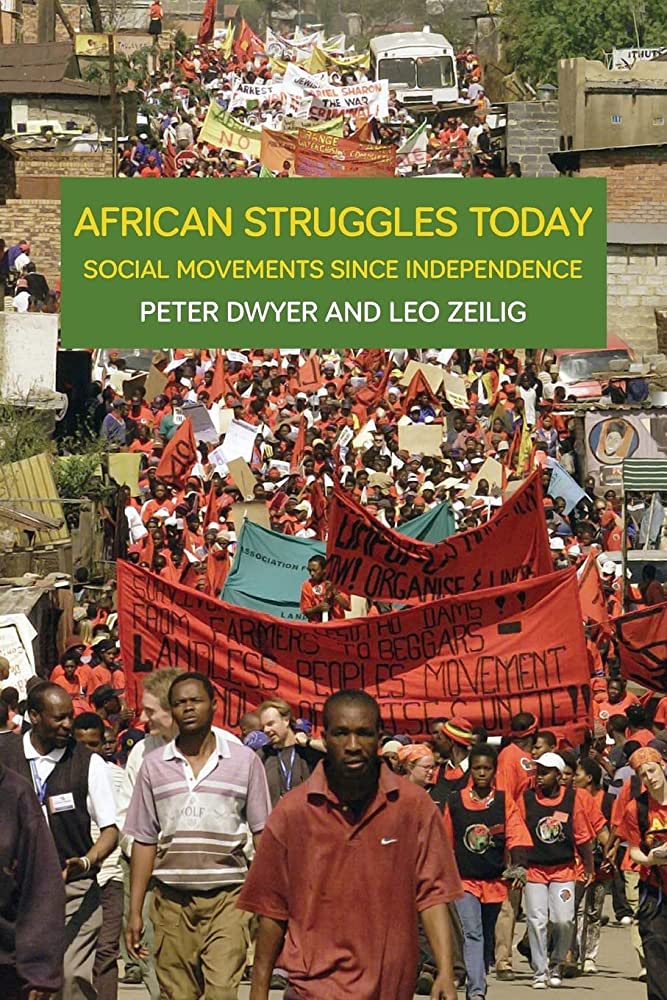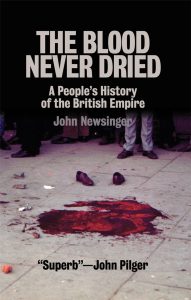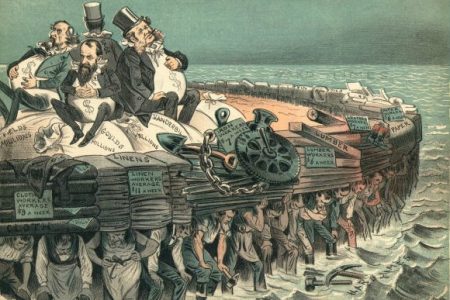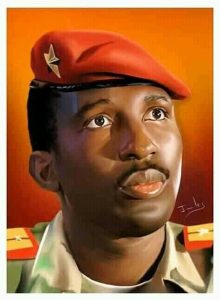– electronic and paper copies are available from Iva Valley Books
African Struggles Today seeks to explain the key role that mass social movements have played in the history of Africa over the last three quarters of a century. Their struggles show that there is hope in the future of Africa, even if, “despite their creative and often heroic efforts, African movements have often failed to achieve their aims” (p237). So this book is the story of “the puzzled, disillusioned, well-organised and angry men and women who continue the struggle to transform their lives and societies for the better”
Although it is evidently true that African elites and external forces (Western governments, global markets and international financial institutions) have decisively influenced contemporary Africa, popular movements of the working class, the poor and other oppressed and marginalised sections of African society have played a central role in shaping Africa’s recent history.
Recent studies, especially those around the anti-capitalist movement, have sought to replace the key Marxist idea of the working class as being the active and core agent of socialist revolution with broader or less well-defined mass movements or coalitions for progressive or radical change.
These popular classes or the wider “African crowd” are defined as including, “the lumpenproletariat of the shantytowns, unemployed youth, elements of the new petty bourgeoisie, laid-off workers, and university students” (pp43-44). However, a more precise definition and analysis of the changing nature of the working class in contemporary Africa and its relationship to the popular movements is work that African socialists need to take on and develop. The book attempts to re-centre analysis on the working class, but acknowledges wider social forces.
Since 2005 South African workers have had more experience of strikes than workers anywhere else in the world. The Marikana massacre in August in 2012 was a failed attempt to frighten the miners back to work. Not only did their strike continue and eventually end with a significant pay increase, but the strike wave has continued and spread to other sectors, both within South Africa itself and across the continent.
Despite this level of working class combativity, wages in Africa are generally lower than in Europe and North America. Many workers lost their jobs and others suffered catastrophic drops in their wages, especially during the 1980s. The resulting pool of destitute urban residents has been maintained, both by immigration controls in the industrial countries and urban migration within Africa which has resulted in mega-cities and associated slums in Johannesburg, Lagos, Nairobi, Cairo and other urban areas of Africa.
The authors identify three major cycles of protest in recent African history, when social movements played a vital role in challenging injustice and exploitation and raised the possibility of radical social change. Broadly these were the:
1. Struggles for political independence from the end of the Second World War to around 1960.
2. IMF “riots” against structural adjustment and other elements of neoliberalism from the late 1970s into the 1990s.
3. Third wave of movements for democracy in the 1990s.
The colonialists, by oppressing Africans on the basis of race, unwittingly strengthened nationalist ideas and increased the unity of the independence movement with the working class playing a leading role in this struggle in many African countries. The 1940s witnessed a major outbreak of industrial action. In 1945, for example, the first general strike in Nigerian history paralysed the colonial machine for six weeks. In Senegal the extraordinary railway strike of 1947 was a major factor in the birth of the nationalist movement.
The achievement of political independence, while a tremendous step forward, did not lead to qualitatively different lives for the majority of people. Nationalist rather than socialist ideas dominated in practice and the intelligentsia rather than the working class gained state power. Made up of students, graduates and junior members of the colonial bureaucracy, the intelligentsia went on to introduce a top-down state-led model of development inspired by rapid industrialisation in the Soviet Union in the late 1920s and 1930s. Ghanaian leader Kwame Nkruma, for example, said: “The Soviet Union, in a little over 30 years, has built up an industrial machine so strong and advanced as to be able to launch the Sputnik… I pose it as an example for Africa.”
In many countries the autonomy of labour movements was rapidly eroded after independence. In what became Tanzania, for example, the government of Julius Nyerere created the National Union of Tanganyika Workers as the sole legal representative of workers and banned independent unions and all strikes. Similarly, Nyerere banned all independent women’s organisations, establishing a single national women’s organisation.
In the first decade or two of independence, education and other aspects of public infrastructure were greatly expanded. But the state-led economic development model then fell apart. The rise in oil prices in the 1970s, the collapse in commodity prices and the increase in interest rates at the end of the decade led to the public debt crisis.
This gave the leverage to the IMF and World Bank to introduce Structural Adjustment Programmes (SAPs) which included what have become the basic tenets of neoliberalism: privatisation, deregulation, opening economies to foreign competition and crucially, in many cases, the reduction and eventual elimination of subsidies. The result was a period of increased social unrest that began in Egypt in 1977. The rise in food and gasoline prices provoked fierce rioting in major cities across the country.
Under the auspices of SAPs, universities often suffered major funding cuts, and students frequently organised the first protests. These brought the urban poor onto the streets, often informally led by the working class; street protests were often supplemented by strike action, sometimes organised by trade union leaders but more usually initiated by rank and file union members. These were not simply just food riots or anti-IMF riots, but were organised and had specific objectives.
African political leaders who at independence claimed to be liberators of their peoples ultimately became responsible for suppressing these movements. Partly as a result, but also inspired by the political revolutions in Eastern Europe and the fall of the Berlin Wall in 1989, Africa exploded in a convulsion of pro-democracy revolts that saw 86 major protest movements across 30 countries in 1991 alone.
The pro-democracy movements were in many respects similar to the previous generation of nationalist movements that came together to achieve independence from the colonial powers. These movements rallied round simple slogans for “change” with little ideological content. As a result, there were no clear political alternatives to neoliberalism and so government economic policies did not necessarily change significantly, even where the previous governments had been successfully overthrown. Across Africa the new democratic governments that came to power in the early 1990s implemented, to a greater or lesser extent, programmes of economic liberalisation. This was despite the fact that protests against structural adjustment programmes had played an important part in weakening the hegemony of their undemocratic predecessors.
The majority of the book focuses on these social movements of the early 1990s, both in countries where this resulted in changes of government (especially Zambia and Malawi) and in the more difficult cases where this didn’t happen, for example, Zimbabwe and DR Congo. Thus the book provides important background information on these two countries which remain deeply problematic. There is also an extended chapter on the particular case of South Africa.
The politics of the anti-globalisation movement, from the turn of the millennium, again did not allow clear class politics to develop. The movement is based around the demands of “the people” rather than the working class and privileges consensus rather than clear decision making. It gives more power to well-paid international NGOs often funded by donors and so it ends up having an ambiguous relationship with the international financial institutions (IMF and World Bank). The Kenyan World Social Forum in 2007 was by far the largest continent-wide non-governmental event ever seen in sub-Saharan Africa, dwarfing earlier Pan-African Congresses. It did stress local agency and diversity and so was a step forward from the restrictive Stalinism and state capitalism (presented as “African socialism”) that most Africans had previously experienced.
Africa has experienced combined but unequal development. This inequality is as evident as much within Africa as between Africa and the rest of the world. South Africa and Nigeria dominate Africa. Between them they have around three quarters of the GDP of sub-Saharan Africa. The richest individuals from these two countries are richer than most members of the ruling class of countries like Britain. This is perhaps not sufficiently recognised or emphasised by the book, which talks about “Africa’s global subordination and exploitation” (p239). But it does recognise that the ruling classes in Nigeria and South Africa are highly integrated into global capitalist structures and, in many respects, operate as regional sub-imperial powers. For example, leading South Africa based telecommunications and infrastructure corporations, supported by global investment, increasingly dominate Africa’s cellular phone and transportation systems.
The book may also not emphasise enough the vibrancy and power of the African working classes, especially in South Africa and Nigeria. Nigerian workers have been involved in six general strikes since the return of democracy in 1999. The last, in early 2012, developed into the largest social movement in Nigeria’s history. Millions struck and mass protests were held in every major urban centre. For a time it appeared that this would transform into a mass popular uprising based around the organised working class. However, under threats from the state, trade union leaders were able—not for the first time—to call off the general strike and the associated mass popular action disintegrated.
“The mass movement against apartheid in South Africa was one of the last great liberation movements of the 20th century and the ending of apartheid one of the century’s most momentous achievements” (p92). But the African National Congress (ANC) government went the way of earlier African governments in implementing neoliberalism. With the start of the new millennium South Africa was still one of the most unequal societies in the world. By the end of 2006 there were on average approximately 6,000 township and community protests a year, a greater rate than in any other country in the world (outside of China)—often organised by South African Communist Party and ANC militants as a strategic reminder to those who have written off the alliance.
The start of the 21st century also signalled the revival of the organised working class. A major strike by public sector workers took place in June 2007 and became the largest strike in South African history lasting four weeks. However, two years later xenophobic attacks on African immigrant workers and the violence and domestic abuse widespread across South Africa indicated how poor people’s frustrations could be diverted.
The history of post-apartheid South Africa, especially over the last five years, has been punctuated by mass strikes and a wave of near-uninterrupted township protests. This climate of rebellion creates immense opportunities and challenges for socialists to help organise the protests and unite the struggles of the unemployed township poor and the working poor into a political alternative that can begin to challenge the dominance of the ANC. Despite the recent fractures within the Congress of South African Trade Unions (COSATU) with plots against its general secretary and the split in the National Union of Mineworkers, its largest member, especially around Marikana, this remains work in progress. Building a socialist alternative to the ANC, as with the case of the Labour Party in Britain, is an ongoing challenge.
The rise in global food prices between 2007 and 2009 led to food riots, general strikes, and protests in 35 countries across the world, 24 of which were in Africa. Eleven uprisings occurred on the continent in that two-year period, directly linked to increases in the price of cooking oil, bread and rice. The current wave of mass strikes in South Africa is continuing with strikes by gold miners, vehicle manufacturers, construction workers and others. As I write (in early April 2014), there is also an indefinite strike by 80,000 platinum miners which has already lasted over two months. There are also echoes of these mass struggles, in many other regions of Africa.
Many on the left in Africa were disorientated after the collapse of Stalinism. They retreated into social movements which do not emphasise self-activity or collective decision making. At best they achieved partial and limited benefits from participation in one-sided dialogues which are still dominated by the ideas of neoliberalism and the economic power of the World Bank, the IMF and the donor community dominated by funds from the main imperialist powers. In many ways it is the ideas of nationalism, including Pan-Africanism, that provide the ideological support to capitalism in its current form of neoliberalism in Africa.
However, especially with the obvious problems with the neoliberal model since the onset of the global Great Recession since 2007 and the confidence gained from the Arab Spring, small socialist groups have been established in several African countries (the International Socialist Tendency has links with sister organisations in six African countries). They are developing a clear local view of the need for collective action and socialism from below. We are also in dialogue with groups from other traditions in other African countries in the hope that we can develop a clear strategy across the continent based on the power of the working class to bring about fundamental change from below.
The book provides a rich source of information on the recent history of mass struggles across the continent. This will be valuable both for Africans building a working class alternative to neoliberalism, war and poverty and also to those of us from outside Africa who want to understand the background to the current wave of inspirational strikes. However, the book has only scratched the surface of this rich history of social and popular movements in sub-Saharan Africa. Others need to continue this work so that the clear lessons can be learnt that are necessary to build organisations that can gain a popular following for a more equitable and democratic future.






